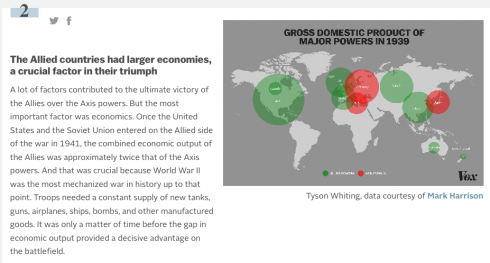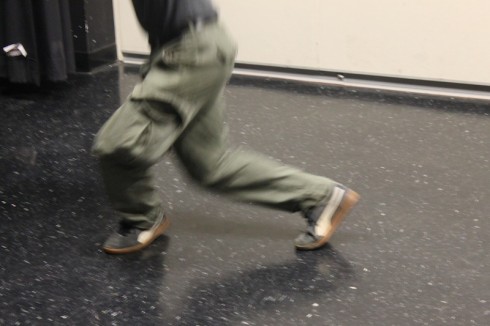Damien Walter makes a cogent argument that the Andor TV series is a Marxist allegory. In doing so, he explains a lot of the language and history of Marxism in a quite entertaining and accessible way.
Category: Social World
Radio Geography

A wonderful website where you can peruse the world and hear local radio stations as you go.
Monopoly Power
Kate Cox has, perhaps one of the best articles I’ve read, summarizing a recent congressional report on the use of monopoly power by Amazon, Facebook, Google, and Apple. It is very readable and well written, bet contains great details about the report’s findings about how these companies abuse their position in the market.
I particularly like her summary of the purpose of antitrust law:
Antitrust law is instead concerned with what you did to become dominant and what you do with the outsized power that comes from being the biggest. If you have a 90 percent market share but it all came from natural growth and you deal fairly with other companies and with consumers, antitrust regulators are probably going to leave you alone. But if nascent startups can demonstrate you used your bulk to knock them out before they could become real competition, or if competitors can show you unfairly leveraged different parts of your business to squeeze them out? Those are problems.
Kate Cox in Arstechnica.
Racial Discrimination in Housing
Racial segregation in housing has a long history in the US. Prior to 1917, cities could (and did) pass laws banning sales of houses to black people in white-majority neighborhoods (interestingly, one argument in favor of the law was economic in that “such acquisitions by colored persons depreciate property owned in the neighborhood by white persons” Buchanan v. Warley, 245 U.S. 60 (1917)).
After the Buchanan v. Warley decision, legal segregation moved from the government rules to mortgage loan rules (redlining) and racially restrictive covenants, where the segregationist rules were written into home sales contracts. These were deemed unenforceable in Shelley v. Kraemer (1948), where the Supreme Court made the somewhat odd ruling that while these covenants were not unconstitutional under the Equal Protection Clause of the Fourteenth Amendment because they were agreements between private parties, enforcing them was unconstitutional because that would require action by the state. Of note: the house that precipitated this case is located in St. Louis.
Now that the government could not enforce racially restrictive rules, real estate agents took to blockbusting, where they took advantage of the fears of white residents to convince them that black homebuyers were moving into their neighborhood and that they should sell quickly and at a discount to escape the deleterious effects (including the aforementioned depreciation of home values). The agents would then resell the houses to black purchasers at above market prices.
White flight became a thing. Large portions of the white population migrated from the cities to the suburbs and exurbs as urban neighborhoods became more diverse.
Cutter et al. (1999) use data on house prices and attitudes towards integration to show that,
in the mid‐twentieth century, segregation was a product of collective actions taken by whites to exclude blacks from their neighborhoods. By 1990, the legal barriers enforcing segregation had been replaced by decentralized racism, where whites pay more than blacks to live in predominantly white areas.
Cutter et al. (1999). The Rise and Decline of the American Ghetto, in Journal of Political Economy
Vol. 107, No. 3 (June 1999), pp. 455-506. (full article)
Samuel Kye’s article on The persistence of white flight in middle-class suburbia (abstract only), uses 1990-2010 census data to show that it’s still ongoing. Kye controls for socioeconomic factors to show that this type of sorting remains, significantly, racially motivated. A couple of news reports on this study can be found here and here.
Lichter et al. (2015), did a more granular analysis of the same census data, and find that while cities are getting more diverse, macro-segregation, between different suburbs and exurbs is increasing. (News summary here).
Of consequence to education, Erica Wilson has a detailed article (2019) that, among other things, looks into how modern racial segregation in housing shapes, and is shaped by, parents’ preferences in choosing schools (and the closed social networks they use to make these choices).
Taking an ethnographic perspective, Elizabeth Korver-Glenn, has a very interesting paper on the role real estate agents play (much of it inadvertently or at least unintentionally) in maintaining segregation in Houston TX. Korver-Glenn sums up the research in an interview and brief on the No Jargon podcast The Hidden Listings.
Today, a key issue she finds is that real estate agents’ networks are racially segregated.
Most basically, I learned that the real estate agents tap their social networks as primary tools for generating business. Because those networks are racially structured, white real estate agents end up working primarily with White home buyers and sellers, while Black and Latino agents deal with more diverse sets of clients.
Korver-Glenn (2018). HOW AMERICA’S REAL ESTATE BROKERS STILL USE PRACTICES THAT REINFORCE RACIAL SEGREGATION, on Scholars Strategy Network.
Discriminatory effects are amplified because agents also often keep personal lists of houses that are not publicly available, so called ‘pocket lists’.
Additional References
Korver-Glenn’s research is published in Brokering Ties and Inequality: How White Real Estate Agents Recreate Advantage and Exclusion in Urban Housing Markets (abstract only).
David E. Bernstein argues the importance of the Buchanan v. Warley case in SCOTUSblog.
WW2 in Real Time
TimeGhost is an utterly amazing project. They’re currently going through World War II, week by week, in real time. That is, every week they post a really good summary of what happened in the corresponding week of the war.
They’ve also done WWI in the same way and have ancillary channels about other conflicts, like the Cuban Missile Crisis Day by Day.
Definitely, worth a look.
Dance Lesson
Maps that Explain …
Vox does some great articles using maps to explain things like World War II (which is always a popular middle/high school topic for history papers). What the site does best, is that it accompanies each map with an explanation of what was going on. This results in a set of really interesting vignettes that stoke the curiosity bunkers.

Sources of Oil Used by the U.S.
Randal T. Olson compares the sources of the petroleum the U.S.A. uses, to where people believe the oil comes from.

While Canada is our major supplier of oil, Americans tend to believe that the oil comes from Saudi Arabia and Iraq.

